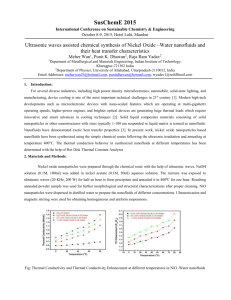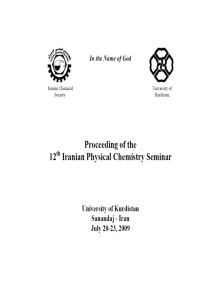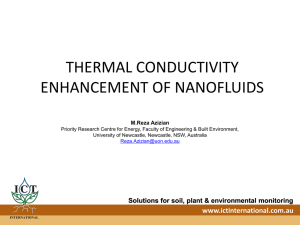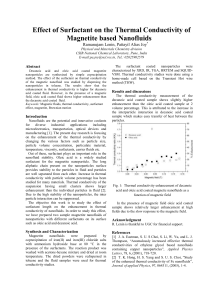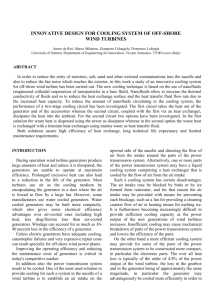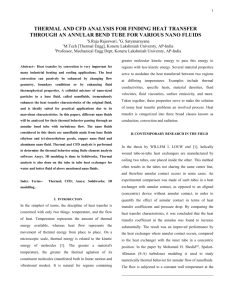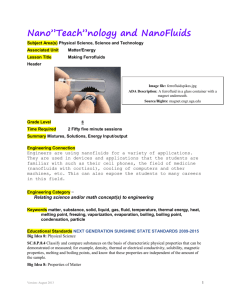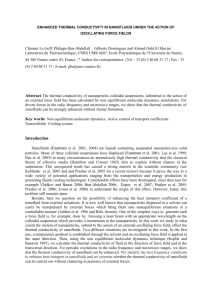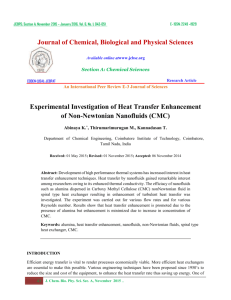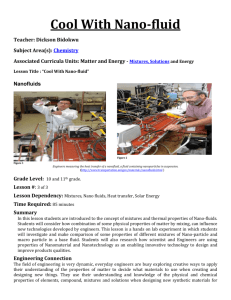Argonne National Laboratory, Argonne, Illinois, USA
advertisement
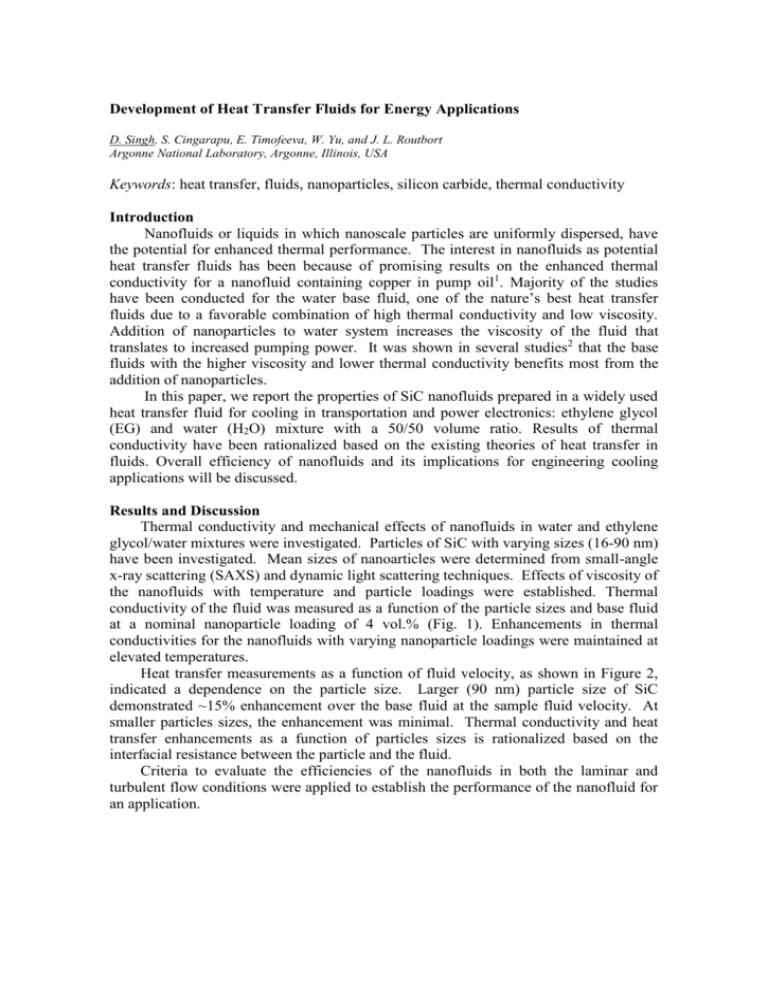
Development of Heat Transfer Fluids for Energy Applications D. Singh, S. Cingarapu, E. Timofeeva, W. Yu, and J. L. Routbort Argonne National Laboratory, Argonne, Illinois, USA Keywords: heat transfer, fluids, nanoparticles, silicon carbide, thermal conductivity Introduction Nanofluids or liquids in which nanoscale particles are uniformly dispersed, have the potential for enhanced thermal performance. The interest in nanofluids as potential heat transfer fluids has been because of promising results on the enhanced thermal conductivity for a nanofluid containing copper in pump oil1. Majority of the studies have been conducted for the water base fluid, one of the nature’s best heat transfer fluids due to a favorable combination of high thermal conductivity and low viscosity. Addition of nanoparticles to water system increases the viscosity of the fluid that translates to increased pumping power. It was shown in several studies2 that the base fluids with the higher viscosity and lower thermal conductivity benefits most from the addition of nanoparticles. In this paper, we report the properties of SiC nanofluids prepared in a widely used heat transfer fluid for cooling in transportation and power electronics: ethylene glycol (EG) and water (H2O) mixture with a 50/50 volume ratio. Results of thermal conductivity have been rationalized based on the existing theories of heat transfer in fluids. Overall efficiency of nanofluids and its implications for engineering cooling applications will be discussed. Results and Discussion Thermal conductivity and mechanical effects of nanofluids in water and ethylene glycol/water mixtures were investigated. Particles of SiC with varying sizes (16-90 nm) have been investigated. Mean sizes of nanoarticles were determined from small-angle x-ray scattering (SAXS) and dynamic light scattering techniques. Effects of viscosity of the nanofluids with temperature and particle loadings were established. Thermal conductivity of the fluid was measured as a function of the particle sizes and base fluid at a nominal nanoparticle loading of 4 vol.% (Fig. 1). Enhancements in thermal conductivities for the nanofluids with varying nanoparticle loadings were maintained at elevated temperatures. Heat transfer measurements as a function of fluid velocity, as shown in Figure 2, indicated a dependence on the particle size. Larger (90 nm) particle size of SiC demonstrated ~15% enhancement over the base fluid at the sample fluid velocity. At smaller particles sizes, the enhancement was minimal. Thermal conductivity and heat transfer enhancements as a function of particles sizes is rationalized based on the interfacial resistance between the particle and the fluid. Criteria to evaluate the efficiencies of the nanofluids in both the laminar and turbulent flow conditions were applied to establish the performance of the nanofluid for an application. Figure 1. Thermal conductivity enhancements for water and water/ethylene glycol mixtures as a function of SiC nanoparticle size at a constant loading of 4 vol.% 30000 50/50 EG/H O 2 2 Heat transfer coefficient (W/m K) 16-nm SiC in 50/50 EG/H O 2 25000 28-nm SiC in 50/50 EG/H O 2 66-nm SiC in 50/50 EG/H O 2 90-nm SiC in 50/50 EG/H O 2 20000 15000 10000 (a) Particle size effect 5000 2.5 3.0 3.5 4.0 4.5 Velocity (m/s) 5.0 5.5 Figure 2. Heat transfer coefficient of SiC/EG-water nanofluids with fluid velocity at different nanoparticle sizes Conclusions For the system investigated, use of larger particles provides better heat transfer properties in both laminar and turbulent flow regimes. The efficiency of nanofluids improves with increasing temperature due to viscosity decreases. The suspensions in EG/H2O show higher efficiencies as heat transfer fluids than the similar H2O-based nanofluids due to the demonstrated base fluid effect. The suspensions with the higher concentration of nanoparticles (within the linear property increase region) show higher heat transfer efficiency than the less concentrated ones. References [1] J. A. Eastman, U. S. Choi, S. Li, L. J. Thompson and S. Lee, 1996 Fall meeting of the Materials Research Society (MRS), Boston, MA (United States), 2-6 Dec 1996 ; PBD: Nov (1996). [2] H. Q. Xie, J. C. Wang, T. G. Xi, Y. Liu and F. Ai, Journal of Materials Science Letters 21 (19), 14691471 (2002).
